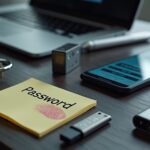
How to reset apple ID password
Unlock your Apple ID with ease—discover the essential steps to reset your forgotten password, but there’s one crucial detail you can’t miss.

Software code isn’t perfect. In a world where technology is a part of everything we do, even a single typo can have global consequences. The story of the Heartbleed bug, a security flaw that shook the internet, is a vivid reminder of the complexity and fragility of the technology we use every day.

This isn’t just a tale about a mistake, but about how software engineering and digital security come together to protect our connected world.
In 2014, the Heartbleed bug was discovered. It was in a security program called OpenSSL, which was used by millions of websites worldwide to protect internet communication. Think of OpenSSL as a padlock that secured important information like passwords and credit card details.
The bug was a problem with the “Heartbeat” feature of OpenSSL. Imagine you ask a server if it’s working by sending a small message. You expect it to send the same message back. The Heartbleed bug allowed you to lie about the size of your message. You could send a 10-character text but tell the server it was 64 characters long. The server would then send back your 10-character message plus 54 random characters from its memory. This extra memory could contain anything: passwords, security keys, and other secret data.
When the Heartbleed bug was discovered, it caused panic. Millions of websites, including major tech companies and banks, were at risk. The bug had existed for over two years, meaning hackers could have been stealing data for a long time without leaving a trace.
The impact was immediate:
As soon as the Heartbleed bug became public, a team of developers and security experts acted quickly. The fix was simple: change the OpenSSL code so the server would only return the exact amount of data requested. But installing this fix on every server in the world was a massive task.
The challenge wasn’t just writing the fix but making sure it was installed on all the vulnerable servers. Tech companies, service providers, and system administrators worked together to apply the fix.
The story of the Heartbleed bug is a vivid reminder that behind the perfect user experience lies a world of complex code and challenges. More than a simple error, it taught us a valuable lesson about the responsibility of the software community. The crisis highlighted the need for more funding and support for open source projects, highlighting the fragility of our digital infrastructure. It also raises the question: who truly dominates technology today and is responsible for ensuring everyone’s security? The global security and software engineering community coming together to fix what was broken demonstrates that this responsibility is shared, ensuring that the digital world continues to function.

Unlock your Apple ID with ease—discover the essential steps to reset your forgotten password, but there’s one crucial detail you can’t miss.

Plagued by malware, your computer could suffer more than you realize—prepare to uncover the unexpected consequences lurking beneath the surface.

Missing these top 5 password mistakes could put your accounts at risk—are you making one without even realizing it?

Discover the subtle clues that your iPhone may be infected and learn why ignoring these 7 signs could put your data at risk.

Uncover the safest way to remove a Trojan virus from your Mac before it causes serious damage—there’s one crucial step you can’t afford to miss.

Thinking your iPhone might be infected with malware? Discover the crucial manual checks you need to perform before your data is at risk.